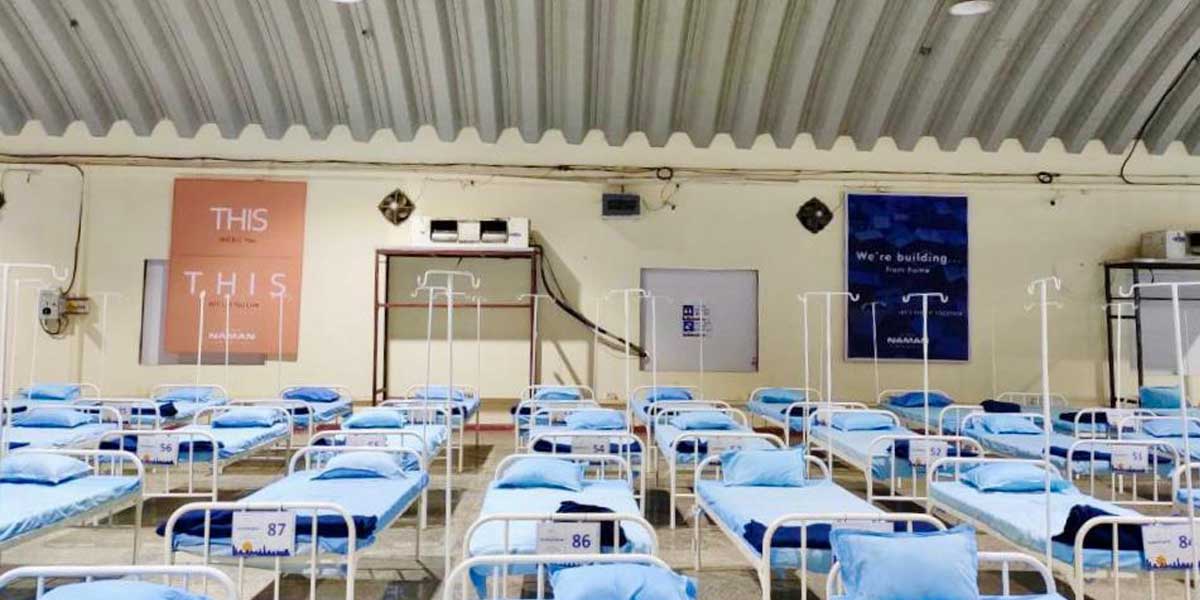

The second wave of the Coronavirus pandemic has been very severe. In a bid to help state authorities and urban local bodies (ULBs), several developers across India are supporting them with various medical and quarantine facilities.
Maharashtra is no exception. Members of realty developers’ body CREDAI MCHI have converted their properties at different places and are offering them as facilities or COVID centres.
For instance, as Deepak Goradia, President, CREDAI MCHI, tells us:
When asked if oxygen arrangements are made at these facilities, Goradia responds, “Oxygen available in bottles can be provided but larger arrangements take about two to three months.” Further, real-estate developers are also helping local bodies with other initiatives such as undertaking vaccination drives for the labour force and stepping up safety measures at construction sites.
Apart from developers, several other firms are coming forward to help battle the pandemic in various ways. In the wake of high oxygen demand from hospitals, Jindal Stainless—which produces liquid oxygen at its stainless steel manufacturing facility in Hisar for industrial purposes—has been supplying ~8 tonne a day of liquid oxygen to the nearby medical facilities in Haryana. The firm has been supplying oxygen to nearby hospitals since April 2020; it has supplied over 2,170 tonne of oxygen to medical facilities so far. Jindal Stainless is prepared to supply more to hospitals in need even at the expense of its production commitments.
The question is: Is the real-estate and construction sector prepared enough to tackle the situation of looking after in-situ migrant labourers at sites?
According to Dr Niranjan Hiranandani, National President, NAREDCO, “The industry is now much equipped to tackle the on-ground situation during the COVID resurgence with better safety gear and precautionary measures in practice for in-situ migrant labourers.
Complying with state governments’ SOPs, developers are also being responsible to facilitate food, shelter, and daily wages, acting as a safety net to keep the reverse migration at bay.” Reverse migration by migrant labour is a worry across the economy. “The safety and security that opening up vaccination to everyone over 18 will bring across age groups—including construction labour—will go a long way in ensuring a safe and secure working environment,” he adds.
Further, says Goradia, “We have requested every developer to do an Antigen test first and if something suspicious is found, to immediately do the RT-PCR test. We have also tied up with doctors locally; they visit the site once a week and a medical check-up is done for all the labourers. This will be going on at almost all sites.”
Goradia begs to differ, though. “We don’t see the second wave having such a huge impact on the real-estate sector,” he avers. “The Maharashtra government is working actively to break the chain. While the second wave may disturb the first quarter of 2022 in terms of launches and sales, as the real-estate sector, our turnover does not get disrupted; it only gets delayed.”
When asked about the supply chain, Goradia confirms that with construction activity ongoing and the labour force staying at site, the supply chain, too, is not interrupted. “We are getting the required supply of raw materials such as cement, steel, etc.”
In agreement, Dr Hiranandani says, “We may witness short-term sluggishness for site visits owing to travel restrictions but the sector will bounce back with more ready products to cater to customers.”
- SERAPHINA D’SOUZA